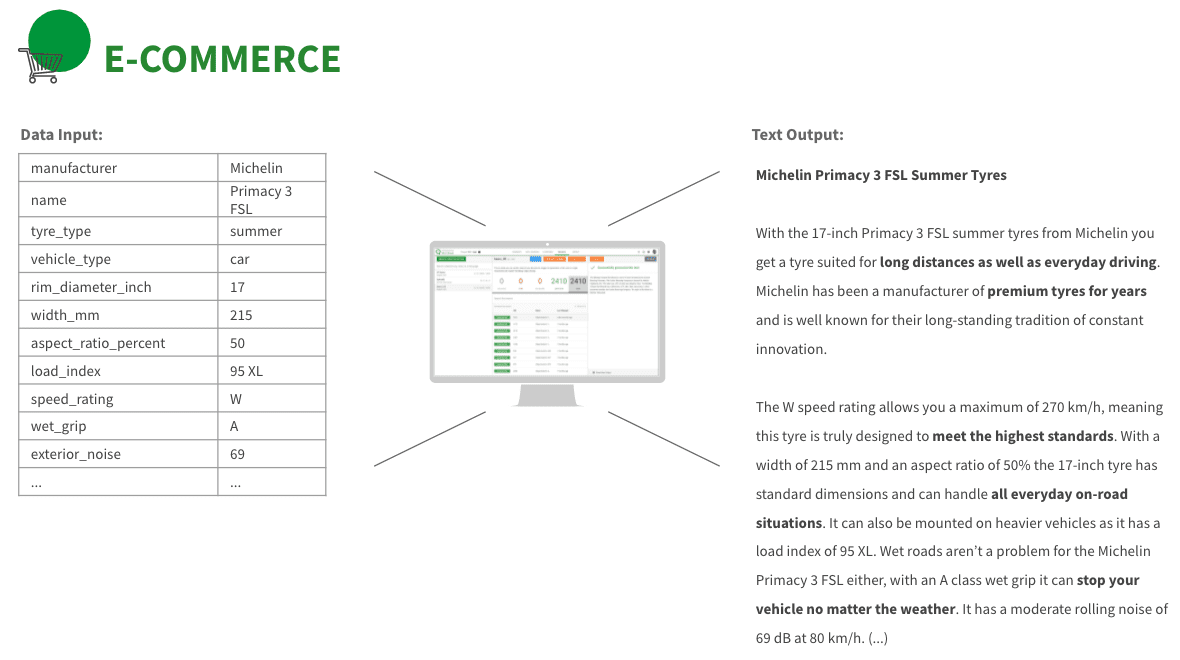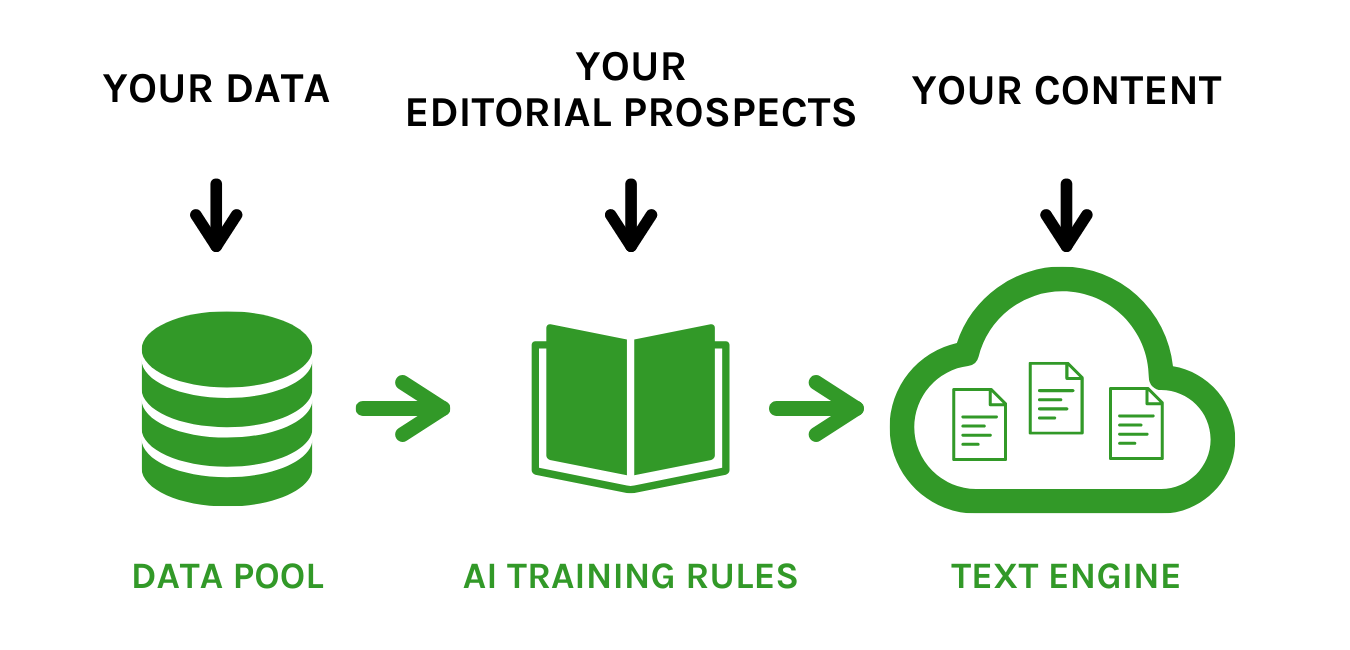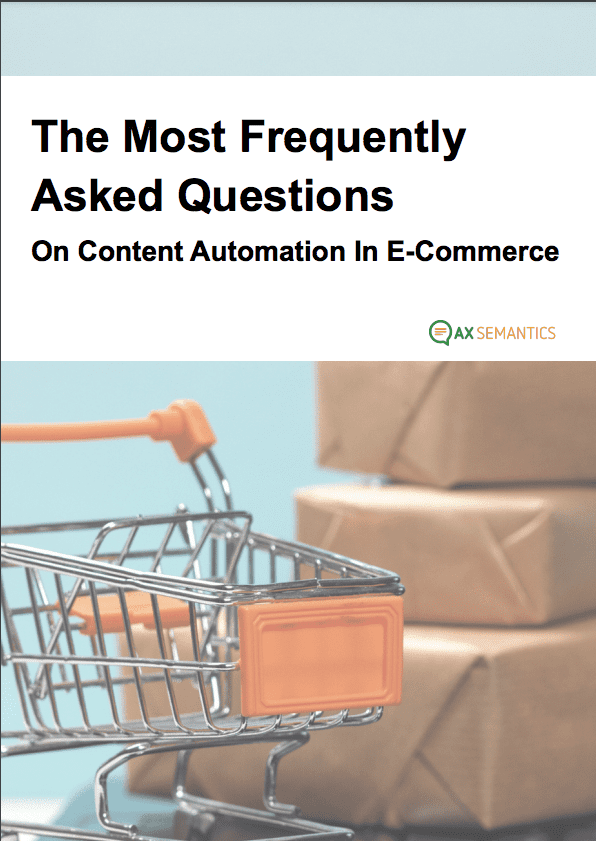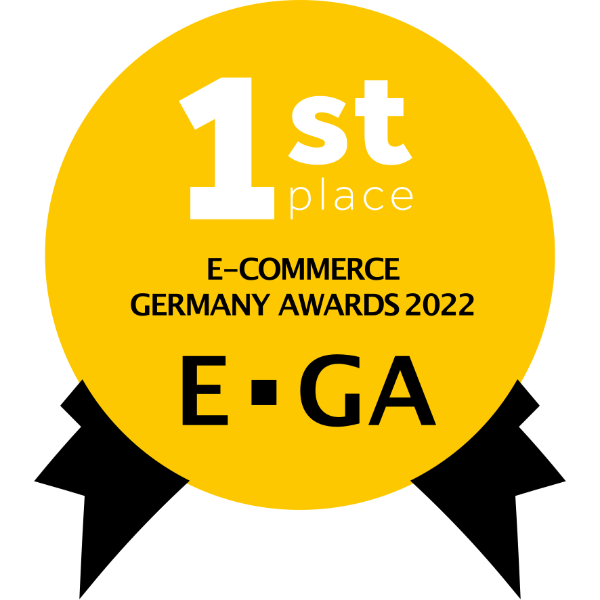
AI-Generated Content: How to Save $10,000+ on Content Writing
How much time does it take to write a product description? Perhaps 5 or 10 minutes?
It may not sound like a lot, but multiply the number by a few thousand because that’s how many products a typical eCommerce store sells. You will realize that your content creators need entire weeks or even months to write something as simple as product descriptions.
That’s where AI-generated content steps in.
Usage of AI-Generated Content
Though future writers are unlikely to be machines, artificial intelligence (AI) has made it possible for robot-human hybrid systems to create and modify content. AI-generated content, as the name implies, is basically content created by AI. Most AI systems are capable of performing tasks that would typically involve human logic, intelligence, understanding, or decision-making.
There are two main methods that AI copywriters use:
- Machine learning: is an artificial intelligence process that relies on a computer program or software to learn from data. It accomplishes it by teaching an algorithm to filter through millions of online pages in search of patterns. It then applies that information to create fresh material on a specific topic.
- NLG: the acronym NLG stands for Natural Language Generation. Natural Language Generation is a subfield of artificial intelligence (AI) and describes a process that allows creating new content. NLG programs impress with their intelligence, analyzing structured data and translating it into text. If you have a lot of data-driven information that needs to be articulated, you can feed it into Natural Language Generation software.
AI-generated content is the easiest way to automate the content generation and instantly create thousands of posts. AX Semantics produces content based on Natural Language Generation. The platform helps large businesses and online stores to save money on content writing.
How is this possible?
Our tool uses Natural Language Generation (NLG) to write human-like text by decoding real-time data input. But that’s just the tip of the iceberg. In this post, you will learn:
- The basics of NLG
- How does AI-generated content work
- The benefits of NLG
- How to use AX Semantics
- Differences between NLG and human-powered content creation
We have a long way to go here, so let’s dive straight into the topic and explain each technology (NLG, NLP, NLU) that AI uses for content making.
What is NLG?
You probably know about artificial intelligence and how it deals with content creation, but what about NLG? It’s a relatively new concept that essentially adds power to content generation to become an advanced niche article writer.
But what the heck is NLG?
The two main NLG is a software process and can be executed in two different ways: GPT-3 and data-to-text. They generate texts in quite different ways. Data-to-text automatically transforms structured data or real-life information into human-readable text. As such, it plays an important role in several fields of AI content generation:
- Retail and eCommerce: Online stores have clear categories in which this AI product description generator tool can thrive. It helps you create more content in less time by taking over repetitive writing tasks.

- Real estate: NLG enables real estate agents to create unique descriptive texts for their properties automatically.
- Business and finance: AI content generators can also write accurate reports in the fields of business and finance. Even better, they can do it at scale to replace human reporters.
- Media and publishing: Many media reports follow similar structures. For example, think about football—NLG can write great reports if you give it the basic information about the match.

The list of applications goes on, but it’s clear that NLG has a wide range of possible use cases. It is, however, necessary to mention a few drawbacks as well.
First of all, the NLG-system data-to-text requires well-structured data to work properly. It’s not an issue with large businesses and online stores because they have lots of repetitive inputs. But it can be challenging for smaller organizations with minor data libraries.
The system remains highly reliable for eCommerce businesses that need lots of quality content. It relieves content writers from repetitive tasks that no one wants to carry out, so it is a good alternative to copywriting agencies and services.
How is NLG Different From NLP and NLU?
Users looking for the best AI content generator will often bump into acronyms that look very similar: NLG, NLP, and NLU. All of them belong to a bigger set of artificial intelligence, but they aren’t the same. That’s why we need to explain the differences between the three technologies.

1.NLP
NLP stands for Natural Language Processing and it makes an integral part of artificial intelligence. NLP is a wider concept compared to NLG and NLU because it does both things—analyzing information and making content-related decisions.
To put it simply, it can figure out your input and respond accordingly. That’s why you’ll see NLP in various fields of content marketing and beyond.
2.NLU
NLU stands for Natural Language Understanding, which means its role is to interpret data. The system uses machine learning and other techniques to analyze the entire context. NLU does it by interpreting all language levels, including semantics, pragmatics, and syntax.
Therefore, the main purpose of NLU is to help an AI content generator to understand the text. This is how chatbots can reply to customer inquiries so promptly.
3. NLG
We already discussed the logic behind NLG, but let’s give it a brief recap. NLG means the automated generation of natural language text. This text is generated by a machine. NLG programs make it possible to produce large amounts of text very quickly. The two main NLG types are GPT-3 and data-to-text.
Thanks to its comprehensive understanding of data, NLG writes tailored content almost instantly. That’s what our tool, AX Semantics, is all about.
How Does AX Semantics Work?
According to an article on forbes.com, over 70% of consumers feel frustrated when a shopping experience is impersonal. The importance of customization in modern business is overwhelming, and AX Semantics deals with this challenge in particular.

The point of this content creation tool is to turn generic product pages into personalized sales pitches. How can you do that? The general functionality of the AX Semantics tool comes in three steps:
1. Upload Your Data
Here, you can upload your data like product features or financial data and wait until it’s uploaded successfully.
2. Configure a Rule Set
In the second step, you’ll configure the rule set for your text project to match your brand voice, tonality, and more.
3. Generate Content
The final step is, of course, to generate your content. It’s so simple that you’ll do it by the touch of the button. Content will be engaging to the readers and even SEO-friendly for Google!

Personalization feature
Now, when it comes to a detailed use case for content personalization, the eCommerce Suite software of AX Semantics comes up with a simple four-step process:
1. Data Gathering
The NLG platform adds a tracking system to your website, collecting user-related behavioral data in real-time. Semantics AI analyzes information like locations, product views, time spent on your pages, and customer status.
The best thing is that the platform respects GDPR guidelines, so you don’t need to worry about the misuse of data.
2. Data Analysis
The second step is to analyze data in our Metrics system. At this stage, it is possible to plan content creation and set accurate writing objectives. The platform does some heavy lifting to draw meaningful conclusions from your website data.
3. Content Generation
Based on the analyses and the defined content goals, the AX Natural Language Generation software designs and generates personalized content.
4. Display Content
The fourth stage is simple—you get to display personalized content on your website. Each user will see a slightly different version of the text. It doesn’t mean that the text will be different in 100% of the cases. It will change when the platform identifies a chance to approach a user using unique descriptions.
Practical Benefits of NLG
Now you know how NLG works, but is it really that good?
Well, yes it is.
The platform offers you some serious benefits that the traditional content marketing process can never achieve. You will discover various advantages on the go, but we will point out only the most practical features.
1. NLG Saves Time
The biggest benefit of NLG and AX Semantics is their ability to save time. You don’t need to wait for content writers to make thousands of more or less the same product descriptions or reports. Instead, you can let the AI content generator do it on your behalf.
Take Billiger.de as an example. It is one of the most established price comparison portals in Europe, listing prices for millions of products. AX Semantics helped Billiger.de's copywriters to create over 100 thousand unique product descriptions in a year.
This means a single content creator was able to complete more than 200 product descriptions daily. Without NLG, this would be impossible.
2. Reduce Costs
The second benefit is the result of the previous one. Instead of hiring dozens of copywriters to create so many pieces of content, you can let our AI writer do most of the work. That way, you can significantly reduce costs while speeding up the process.
Think about it for a moment and try to answer this question: How much would you regularly pay to get a thousand product descriptions? We’re sure it’s much more than the price for an NLG tool.
Take Schäfer Shop for example. They have reduced costs from 26 Euro to only 3 Euro per description through content automation, with 30,000 descriptions per year. Read their case study here.
3. Create Hyper-Personalized Content
We believe that hyper-personalized content is the most important advantage of AX Semantics. Our E-Commerce Suite utilizes real-time data to create highly personalized content. For instance, it will design unique product descriptions for each visitor.
The best thing about NLG is that it completely automates the process. As incredible as it sounds, NLG turns hyper-personalization into routine business. How cool is that?
4. Improve Customer Experience
According to an article on techjury.net, almost 90% of consumers claim they are ready to pay more if it means getting a better customer experience. This also means receiving personalized content that suits their specific needs and interests.
NLG gives users exactly what they want—unique content based on their real-time demands. It is a surefire way to improve customer experience.
5. Higher Conversion Rates
Finally, you can expect personalization and an improved user experience to generate higher conversion rates. For example, the largest online store in Germany, Otto, witnessed a huge increase in conversions thanks to AX Semantics.
They take advantage of time-bound content tweaks based on current user behavior. Doing it across the entire portfolio made a serious impact on Otto's conversion rates.

Open questions around automated content generation?
Download our free white paper that answers frequently asked questions around content automation and the AX software.
AX Semantics Reviews
AX Semantics earned lots of comments on product review websites, so let’s take a look at some evaluations.
G2 gives it a score of 4.3 out of 5, naming AX Semantics one of the industry’s high-performers. Here’s what a validated reviewer says about the platform:
| What do you like best? Once familiar with the text engine’s logic and its special functions, you’ll get into some kind of flow with the machine. It is intuitive to use and if you bring a good data structure and some feeling for language, you’ll soon watch it producing all the texts you need. What do you dislike? I haven’t experienced anything to dislike up to now. If any issue appears – which happens seldomly enough – the team is always close by to help and take care of. Recommendations to others considering the product: Be prepared to invest some time – on the one hand, to get to know every possible function of the text engine, on the other to clean up your data. Deep knowledge of the engine and structured data are key to perfect text results. What problems are you solving with the product? What benefits have you realized? Creating individual product descriptions for both B2C and B2B use. The text engine saves a lot of time, while each reader gets all information desired without being bored by the same phrases for every product. |
There are a few critics and they all address the same issue—a steep learning curve. Here are a couple of examples:
| What do you dislike? “The whole setup was overwhelming to me at first, but I think this is normal when you use new software. The more you use it, the easier it becomes.” “The tool is a bit complicated and does need that support staff to help set it up.” |
You will bump into similar reviews on Cupsera. This platform gives AX Semantics a score of 4.37 out of 5. Its score on Product Hunt is 4.3 out of 5.

NLG vs. Human Copywriters: Which One Is Better?
NLG is a revolutionary technology that takes content writing to the next level. It still can’t fully replace human writers, but it is way better if you want to scale content generation. This table of features will show you why.
| NLG | Human Writers | |
| Efficiency | The system is highly efficient. It can write hundreds of texts daily. NLG doesn’t get tired and it doesn’t take breaks. | Human writers can’t reach the desired level of productivity. |
| Cost | It requires upfront costs, but it guarantees results and greatly reduces costs in the long run. | It takes dozens of content writers to replace an NLG tool. You can save $10,000+ by reducing your copywriting staff. |
| Personalization | AX Semantics creates personalized content at scale according to real-time data. | Human writers cannot craft personalized content because they don’t write based on real-time input. |
| Automation | NLG practically automates content creation. It requires only minimal instructions and fine-tuning. | Traditional copywriters do all content pieces one by one, which is extremely time-consuming. |
| Localization | AX Semantics allows you to expand to international markets quickly. It works in 110 languages. | Even the best content creators can’t write in more than three or four languages. |
| SEO | NLG crafts SEO content with a special focus on search engines and user intent. | Human writers can write SEO content, but the process is slower and less data-driven. |
| Uniqueness | The system will always create a unique blog post or product description. It does so even if you give it thousands of similar topics. | Real people tend to repeat themselves when dealing with similar topics over and over again. |
Conclusion
NLG is the next step in the evolution of content creation. The new form of AI content generation writes better and faster while creating highly personalized content. This is particularly convenient for large businesses and eCommerce stores with thousands of products.
You no longer have to spend a small fortune on content writing. AX Semantics will help you save at least $10 thousand by writing automated product descriptions. Even better, it will minimize the time needed to do this job.
All this leads to higher user engagement and a much lower cart abandonment rate. Are you ready to give it a try?
FAQ
AI-generated means that artificial intelligence is creating something instead of a real human being. In terms of content creation, it means that AI generates content on behalf of your business or organization.
AI-generated content looks natural because it can utilize data to create human-like language. It can replace traditional content writers in many fields, especially if you need a lot of repetitive content that follows the same structure over and over again.
There are a few ways to use AI in content creation. You can use AI to help you come up with topics or ideas for articles, to help you research and gather information, or to help you write and edit your content.
For instance, eCommerce businesses can use AI to instruct a chatbot to generate customer service content. A chatbot is a computer program that can mimic human conversation. You can type in a topic or question, and the chatbot will respond with a list of relevant responses.
But you can also use AI to make product descriptions, sales copies, CTAs, and more. It all depends on your business needs.
Yes, AI can generate stories. You can use this feature to generate interesting content ideas or write unique website copies. However, AI is still not good enough to consistently write standout stories or lengthy blog posts.
Most AI-generated stories have plot holes and lack the nuance and complexity of human-generated stories. But as AI continues to evolve and become more sophisticated, it is likely that its ability to generate narratives will also improve.


